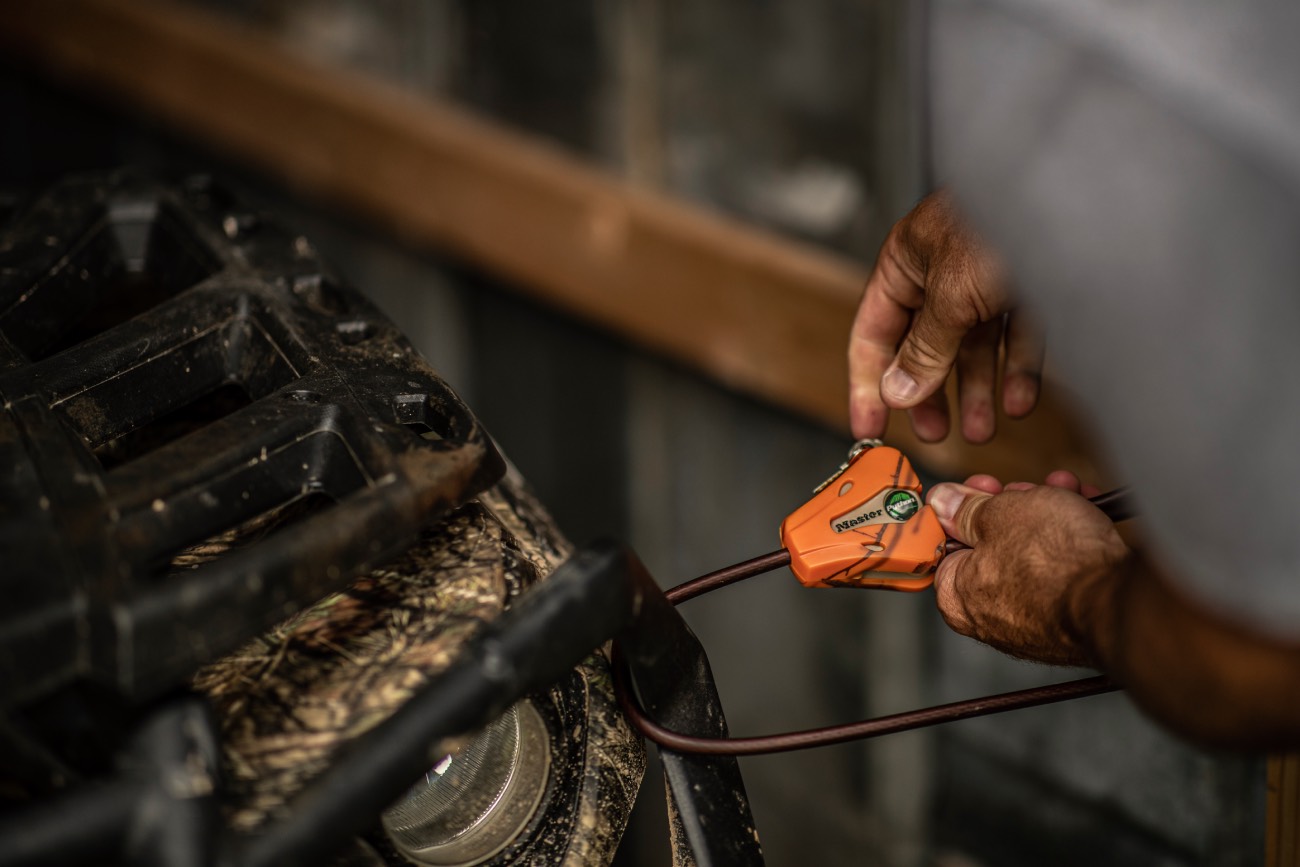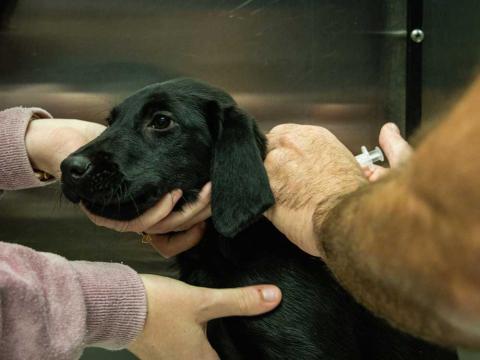Written by Bob Humphrey
Everyone likes to brag to their buddies about harvesting a nice buck or all the deer feeding in one of their food plots. Be careful who you boast in front of... Word of a huge buck travels fast. For some reason, “antlers” can make normally principled people do stupid things. The enticement to harvest a big, mature whitetail buck can trigger certain people to break the law, so the less people who know, the better.
When you catch someone on your property during hunting season who isn’t supposed to be there, what do they always tell you? “I’m tracking a wounded deer.” They say this because in most states it is legal to follow a wounded animal across a property border to try and recover it. The problem is that habitual trespassers have learned this defense and use it for an excuse to go wherever they please. On the chance that they’re telling the truth the first step is to debunk the claim. But once they’re exposed what should you do? Besides releasing the hounds, land-mines, booby-traps or mortars (which I must admit, sound appealing at times) what can we do that won’t also land us in prison? Protect yourself from this and prevent trespassing from ever happening in the first place.
If I actually catch someone I’m usually so angry that the “intelligence center” in my brain just shuts off - I want to tell the trespassers what I think of their unethical actions and get them off the property as fast as possible!
This past fall my brother-in-law and I rounded the corner on the road to our property and saw “blaze-orange” people posted along part of our west border. We pulled up to the closest hunter and in a very happy, nonchalant voice I asked, “Whatcha doing’?” She answered in a neighborly voice, “We’re making a push.” “Really,” I said, trying to keep my composure, “are you having any luck?” “We shot at a small buck,” she said. Then I asked if she had permission to be there. She said “yes.” I couldn’t believe it! The little regulator in my brain that controls my demeanor “tripped the breaker” because I went off on this lady with a rant that that “word-smiths” Dennis Leary and Dennis Miller would be proud of. It lasted several minutes and will go down in property owner history. In a long comprehensive manner, I first told her she was a liar and then what I thought of unscrupulous types like her and her cronies and for her to get the “bleep” off of our property…NOW!
Then she changed her tune. When she heard it was “our land” she said, “But we’re tracking a wounded deer.” I replied, “If that’s true - OK, but for now you get your entire crew off of our property, pronto! We’ll go check the trail and come back to sort things out in a few minutes.” We opened our gate, cut their track in the fresh snow and tried to verify whether or not they were telling the truth. There wasn’t a speck, drop, fleck or microscopic particle of blood anywhere to be found. By the time we got back out to the road, they peeled-out around the corner retreating as fast as possible and we never saw them again.
I made several mistakes - I had a video camera in a case on the front seat of the vehicle within a few feet of me and my rage caused me not to reason clearly. I was more worried about verbally lambasting this crew than thinking ahead and what should have been done. I should have videotaped the entire confrontation. We should have also gone to their vehicle and taken down the license plate and description. Calling the DNR or police should have also been on our list, but the main thing was we should have never left the scene. Rather than thinking about evacuation, we should have been thinking about prosecution.
You need to prosecute every trespasser you encounter! Obviously, exceptions need to be taken for the occasional neighbor or two, but especially people like this who knew they were breaking the law need to be prosecuted every time you come in contact. Word travels fast and usually, it only takes once or twice before people learn to stay off your property.
Even if you live on-site unless you have a 120-foot tall fire ranger observation tower that’s staffed 24/7, you’re not going to catch everyone. So it’s important that you take measures to prevent trespassers from ever thinking about entering your turf.
No Trespassing Signs On Your Hunting Property
There is absolutely no mistaking the fact that we DO NOT want people entering our property because it is clearly legally posted. It is plainly posted with signs every 50 yards along our borders, which are also fenced. In fact, I was so livid after this last encounter that I walked our boundary to bolster our markings even further and now it’s so obvious it’s almost silly. But make sure there is no excuse. These people walked directly by our signs. So every once in a while you’ll get obtuse offenders like these that are bold enough to violate your markers regardless, but that’s why it’s important to prosecute when you catch someone. There are some things to consider while posting signs to your property boundary. While we are all stewards who work toward a goal of bettering our property for wildlife, posting signs about those goals can be dangerous. Instead, taking them for what they truly mean, poachers may see them as a billboard saying, “Big bucks live here” and are even more tempted to trespass on your property.
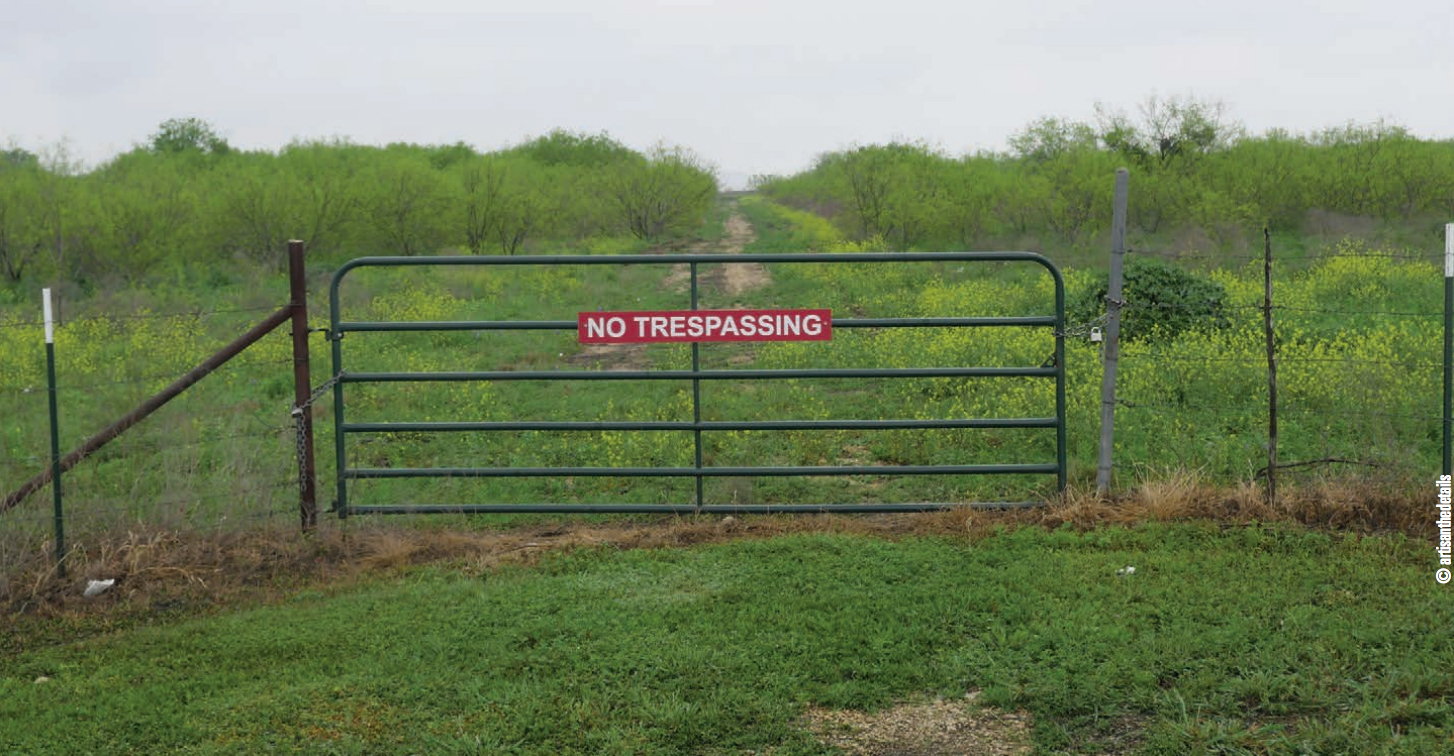
Know Your Neighbors and Game Warden
Even if you’re not a resident where you either, own land, lease rights to hunt, or hunt with permission, nothing beats your presence on site. Your truck and signs of activity are all well noticed when hunting season rolls around. Whenever you’re not around however, the ultimate asset is a good relationship with your neighbors.
Before we purchased this property we went around and introduced ourselves to all of our neighbors. We told them what we wanted to do with the property, that we would be keeping a close eye on it, that we would respect the property boundaries and that we wanted them to do the same. After catching one young neighbor boy on camera while he was on an October grouse hunt two years ago, I believe they saw we were serious about watching over the piece and we haven’t had a problem until the group I told of above. Our neighbors know that we will ask before we enter their property and we expect them to do the same for us. We don’t believe the trespassers above were “locals,” their vehicle was not familiar to anyone in the area so we’re hoping it was an isolated incident and that they learned their lesson and will think twice about crossing our borders.
Your relationship with your neighbor is a give and take relationship; you may have to trade access through your property or allow them to cut hay on your ground, for example. Whatever their incentive is, it’s worth your time and efforts to maintain a good relationship for someone who can give you a heads-up when unfamiliar vehicles show up where they shouldn’t be and look after the place when you’re gone. While not all neighbors are ideal and some relationships can’t be maintained, it is worth it to do what you can.
Locals and friends who frequent the area and can prevent poachers from bothering your property are invaluable. While those whose job it is to protect our resources don’t often have the best reputation with some, it’s extremely helpful to know your local game warden. In all honesty, most problems with a state’s natural resources stem from much further up the ladder than your local C.O. (Conservation Officer). When you do encounter an issue and need their assistance, it’s much more likely you’ll receive a favorable response when you need that help. There aren’t nearly enough of these positions. With so much on their plates during the busy hunting season and typically one person per county (or fewer), it’s a great advantage to both of you for them to know your face and build that connection.
Using Plant Screening, Physical Barriers, and Fences
Plant borders so people cannot see into your property. This all depends upon your time horizon and budget, but I like to use a combination of trees, shrubs, and warm-season perennial grasses. It’s important to put some thought behind this because certain plants lose their foliage during various times of the year and as trees grow they may elevate tall enough so they are no longer a barrier after a few years. So make sure that you consider both seasonally and for the long term. Mossy Oak’s Nativ Nursery can be helpful in designing a visual screen to meet your needs.
I consulted on a property last year that had a problem with poaching along one of their borders. I asked how bad the problem was and they finally had caught one of the perpetrators who admitted killing 19 deer the prior year from the one small stretch they were concerned with! From what I was told this poacher was just one of many. So when you look at how many “shooter bucks” are available in your entire population, just one unethical person can have a huge impact on your hunting opportunities.
To take care of the problem quickly you can simply plant some annual grasses like corn, sorghum or millet, or ornamental grasses like pampas grass also grows fast and tall. Basically, you can have a visual screen in several months. However, these are “annuals” – good for one year only. So I would also make arrangements for a more permanent solution.
Native warm season grasses are one of my favorite answers. Different varieties like Big Bluestem, Little Bluestem and Indian grass can grow 6 to 10 feet tall. I like to plant these grasses in addition to various trees and bushes. Stimulating the native seed-bank by mowing, fire or turning the soil can also create a regenerating native barrier.
Trees are a must for permanent barriers. Conifers are my favorite for several reasons. Obviously, they are thick and green all of the time, hence the reason they are often referred to as “evergreens.” I also like them because only a few varieties are attractive to whitetails so if you choose the proper varieties they really don’t provide much for food value. The last thing that I want to do is plant a variety that is attractive to whitetail in my barrier on my property border. I want to keep them from being seen, not attract them to a spot perfect for people to view.
Plant a combination of evergreens and deciduous trees. Configure your barrier keeping in mind both, horizontal and vertical growth properties. Remember a few years from now your barrier may be ten feet above the ground and no longer serving as a visual screen. Stagger your plantings so people traveling along your border can’t see into your property from any angle. If you’ve been an FFW subscriber for a while you may refer back to the winter 2009 issue and an article by Kenny Thompson entitled Border Patrol for Wildlife. He suggests traveling your borders yourself with a friend and flagging the vulnerable areas. Where you have sharp hills make sure that you take into consideration where exactly people will be viewing from and where exactly they may be looking to. Where you have hills you may not need any ground cover at all, but instead fast-growing trees with thick tops.
The best species for border protection will vary from region to region. You want plants and trees that grow tall, some that grow to a medium height and some that grow short and bushy. I like a combination of warm season native grasses like big bluestem and Indian grass, short bushes like lilacs and elderberry, medium deciduous trees like highbush cranberry and wild plum, tall trees like hackberry and red oak and conifers like spruce and white pine. I understand that some of these varieties are of value to whitetail, but the characteristics they offer for barriers outweigh their minor attractive distinctiveness.
Even if you’re leasing a property to hunt, landowners will often allow you to put up a gate or some fencing if you’re willing to do the work and/or front the materials. A locked gate is a huge statement to those who might otherwise enter. Areas that have never had a gate on them now tell those who may once have visited that it is now definitely not the case. We recommend the Master Lock series for peace of mind. These locks can be placed on gates and also cell phones game cameras--another recommended poacher protection item as the cameras will send you photos in real time of anyone on your property.
Locking your tree stands and equipment is also a good idea in case trespassers get any ideas of theft.
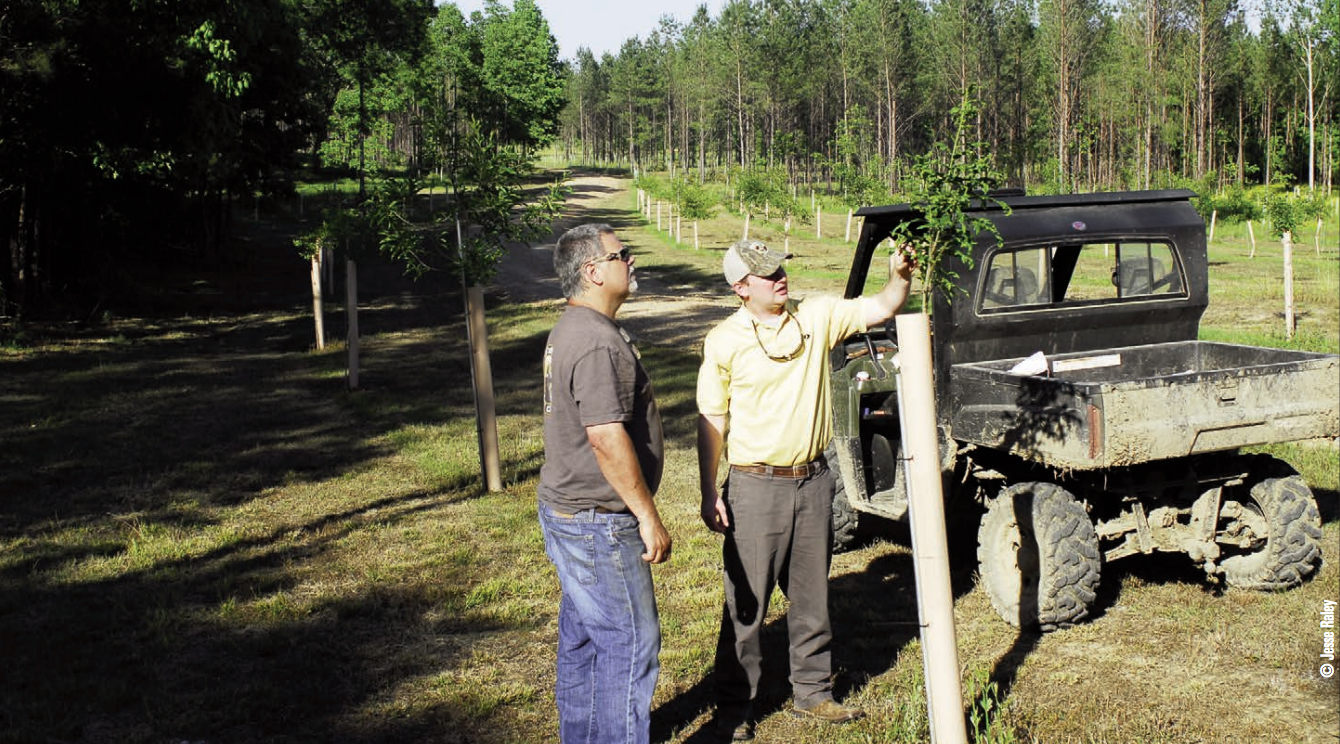
Don’t Tell Everyone About Your Hunting Property
Everyone likes to brag to their buddies about harvesting a nice buck or all the deer feeding in one of their food plots. Be careful who you boast in front of. Word of a huge buck travels fast. For some reason, “antlers” can make normally principled people do stupid things. The enticement to harvest a big, mature whitetail buck can trigger certain people to break the law, so the fewer people who know, the better.
How To Catch Trespassers
My friend John Cooper, who was recently South Dakota’s Secretary of Game Fish & Parks, was a senior resident agent for much of the Upper-Midwest with the Law Enforcement Division of the U.S. Fish & Wildlife Service for 22 years. He informed me long ago, to prosecute a trespasser all you need is a clear, identifiable photo of the trespasser in the act. The problem is coming up with an “identifiable” photo. Most trail cameras will take a clear photo during daylight hours if a person will stand still and pose for it. To take a clear photo of a person that means you need to mount the camera in a spot to see their face. That usually means if the camera can easily see them, they can clearly see the camera. Who wants to lose their $400 trail camera to a trespasser who just got their photo taken? Now because they got their photo taken they pilfer or vandalize your camera to destroy the evidence.
Here’s a tactic that I have had limited success with. I have several old cameras that haven’t worked for a while. I use these as a “decoy” and then set the true “trap” with another working camera trained on the decoy camera. I make sure the working camera is camouflaged very well. If they mess with your decoy camera you now have them for vandalism or theft which typically carries a much harsher penalty than trespassing. When they find your decoy camera it usually satisfies them and they think they’ve won this battle – on the contrary. The toughest job now is getting a positive ID on the person/people in the photos. If it’s not a local person it may be difficult to identify them.
For that reason, I have started using more cameras on the trails and access points. Concentrate on the obvious parking spots, creek crossings, pinch-points along trails or gates that people use with vehicles. A license plate is easy to see and trace as opposed to trying to make out a face in a blurry low-res photo. Make sure to set your camera on its highest resolution so when you zoom in on the license plate you can easily read the numbers.
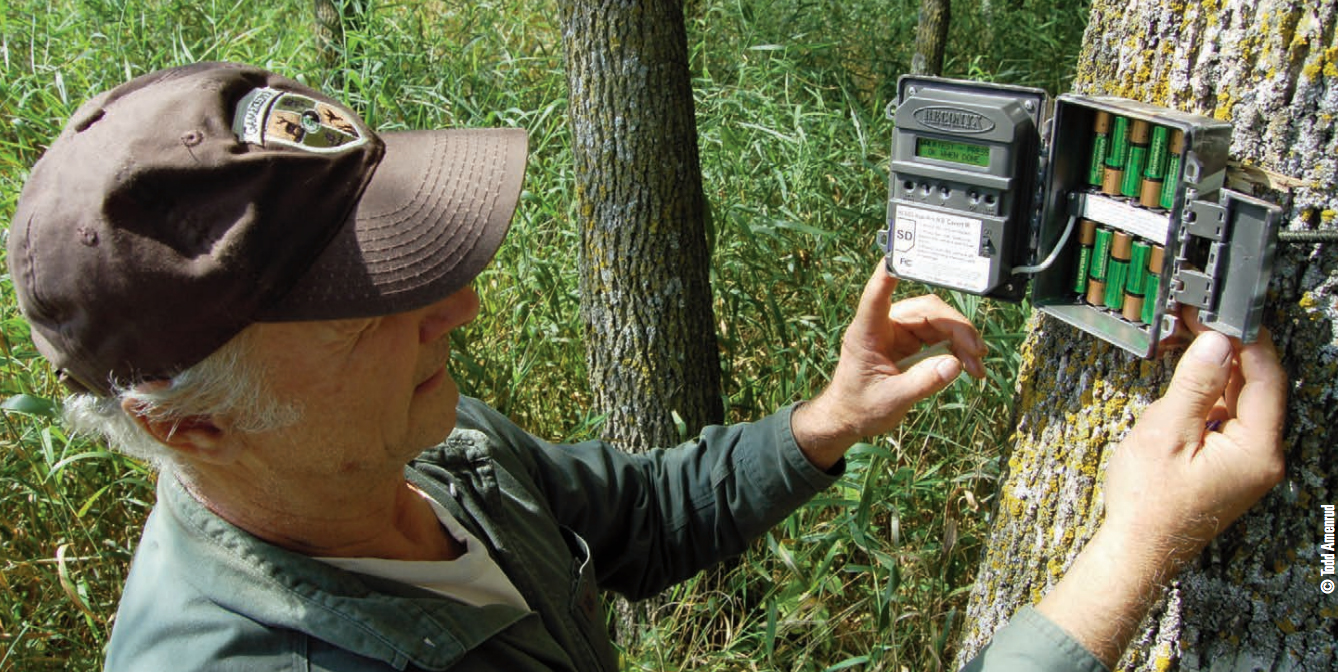
What to do if Someone is Trespassing on your Property
Carry a disposable camera in your pack and always keep your mobile phone (with camera) on you. Your trail cameras are stationary monitors, but what happens when you run into someone in person? Walk straight up to them and say “hello” and snap their photo. Now you have proof! This and name or license plate is all you need to prosecute. If they won’t give up a name follow them to their vehicle to get the license plate. This is something I should have done in the encounter recollected at the beginning of this piece. My phone has a camera in it and I also carry a disposable camera in my pack. I guess the biggest detail is you need to remember to use it, something I blatantly failed at in the prior scenario. I had a video camera sitting right next to me in the truck and all I could think about is getting those unethical violators off the property as fast as possible. Find their vehicles and take photos of them also. Gather and document as much information as feasible. Then prosecute them!
Dealing with Trespassers
Just like a good coach punishing the kid who is late to practice (I know about this), an example has to be made of anyone caught partaking in these illegal actions on your property. Word spreads quickly amongst the local community, especially those who work against everything we do as gamekeepers. Our goals are largely different and long-term compared to those who want a short-term thrill. In reality, this is nothing other than “theft” from hard-working individuals who do things the right way. If you let one trespasser off the hook, another might hear such and be willing to take advantage of your leniency the same way. On the other hand, oftentimes it only takes prosecuting one trespasser before the problem fixes itself.
There’s nothing more frustrating than hearing stories about somebody on or around your property while you were likely at work or busy elsewhere. Finding signs of their activity near your stands, carcasses with the heads cut off or a gut-pile will make you sick after the hours and sweat you’ve put into your preparation. Poachers are the lowest of the low; they’re resource thieves and greedy individuals. While all of our regulations may not make the most sense, they are in place to help us protect our wildlife populations and our futures as hunters.
It’s our duty as conservationists and hunters to raise and educate the next generation of gamekeepers. Ethical hunting and outdoor activities are as important as any experience in Mother Nature. If you know of someone who may be on the line of doing something unethical or committing acts of poaching, do your best to steer them in a better direction. If nothing else, there are several anonymous TIP (Turn in Poachers) hotlines in most states. There are even national hotlines such as Report a Poacher, which can be reached at 1-800-642-3800.

